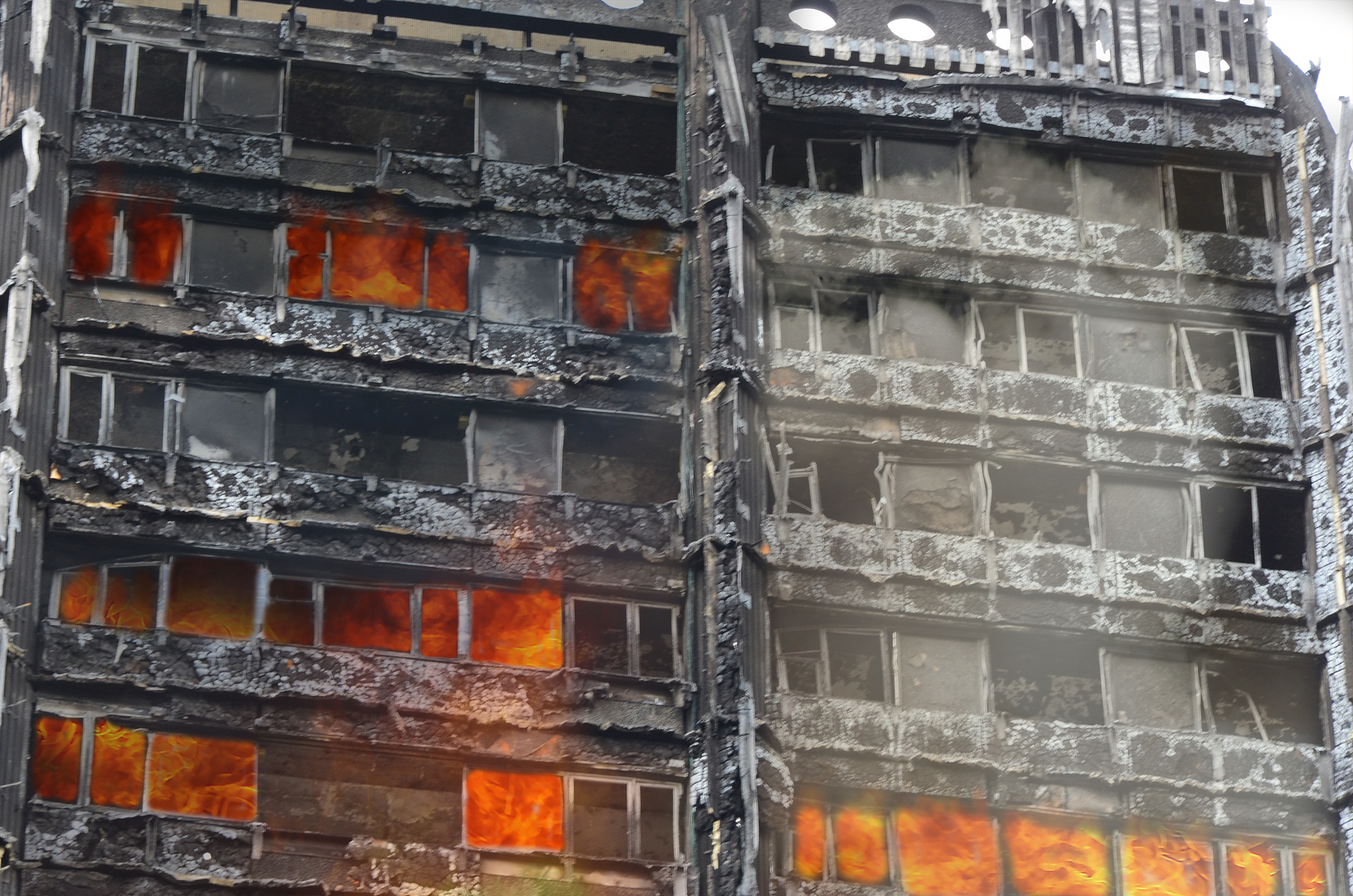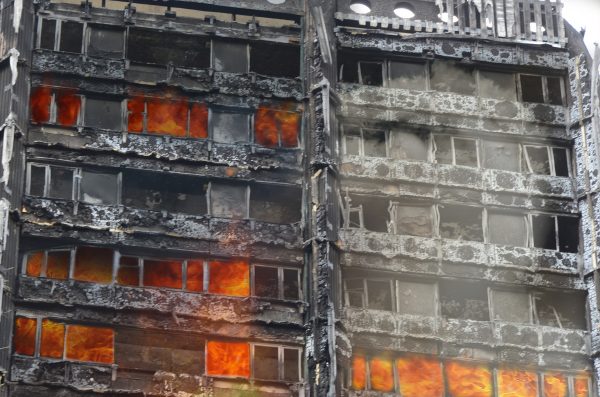
Too Hot To Handle?
Ladies and gentlemen, we have a problem.
The problem I am referring to is deep-seated and largely intangible. It is pervasive, yet hidden. It exists, yet very few recognise it and even fewer can do anything about it. The problem spans several disparate topics and issues that ultimately converge to undermine the very fabric of the UK property market.
As a professional property developer, I have witnessed first-hand how a perfect storm of issues including low housing stock, Brexit, fire-cladding and now COVID-19, have undermined the property market for all of its participants.
As a company, we tackled these issues directly as part of our recent development of Hexagon Court in Balham, London. Work on our flagship project started in early 2018 and was completed in February 2020. The final construction was a robust technical achievement, that required keeping abreast of the rapidly changing government advice on fire hazard safety.
Hexagon Court was designed before the Grenfell fire, but in light of such a tragedy, we had to re-evaluate every safety aspect of the development and upgrade fire standards throughout – in order to exceed current guidelines and future-proof the building against higher standards in future. But do the guidelines stretch us all too far?
Prices mask inefficiencies
According to a recent Nationwide survey, house prices are at an all-time high, notching up their highest monthly rise in 16 years. However, if you speak to individual buyers, sellers and property developers, you will find a litany of issues including transient government policy, vague fire-cladding specifications, uncertainty over property rights and social distancing
restrictions affecting transactions.
Moreover, the combination of problematic issues is pushing millions of people into drastically lower valuations, an inability to buy/sell, or even worse, having their entire home valued at zero by chartered surveyors because the private owner could not obtain a suitable fire assessment on their home.
The elephant in the room
While aggregate housing stock and anticipated housing reform are issues that are longstanding and can eventually be solved with better allocation of private capital and public policy – issues such as fire-cladding and nationwide COVID restrictions have put the proverbial stick in the spokes of the UK property market.
The Grenfell tower fire in August 2017 led to the lamentable deaths of 72 human beings and served as a wake-up call that several high-storied buildings in the UK may not have adequate fire protection. Immediately after the event, a public outcry demanded answers, action and closure. The Queen, flanked by senior civil servants and politicians, visited the site and vowed reform.
However, the tragic loss of life and the ensuing investigation led to a collective knee-jerk reaction on the part of government bodies and civil servants in the housing sector. One would think, that the most catastrophic fire and loss of life in peacetime British history would have led to a thorough investigation that identified the causal factors, and, eventually, for a prudent solution to be enacted, to prevent such disaster in future.
Alas, what we’ve seen, as a policy response, sadly, has been the diametric opposite. The government has dragged its feet with plenty of can-kicking thrown in for good measure. Politicians are still squabbling to this day.
Grenfell investigators identified poor fire cladding as a core factor, but, 3 years on since the fire, many property developers and most private buyers do not fully understand the requirements for a fire-clad building to be approved by chartered surveyors.
In August, news reports surfaced about how an estimated 3 million properties were unable to sell or remortgage their properties due to unsuitable fire-cladding and banks unwilling to fund transactions without “proof” that properties were safe. However, the benchmark for what constitutes “suitable”, “proof” and “safe” has remained vague.
Back in December 2019, the Royal Institution of Chartered Surveyors (RICS), the Building Societies Association (BSA) and UK Finance unveiled a new industry-wide valuation process, designed to help high-rise homeowners to transact their properties.
In a public statement, RICS admitted that high-rise fire-clad properties had been experiencing “difficulties across the market” and confirmed that the standards at the time were “impacting transactions”. The agency also completed its official “external wall fire review”, which requires a fire safety assessment to be conducted by a suitably qualified and competent professional and for said professional to provide an External Wall System (EWS) certificate confirming fire safety regulation adherence.
EWS approvals are designed to verify whether a property owner has installed suitable firecladding on the outside of their home (typically high-rise apartment properties). However, with state regulations regarding fire-cladding in limbo because of Grenfell, millions of UK homeowners are suffering the same fate – stuck in their own homes without knowing if or when they can move.
More than three years on from one of the most tragic accidents in UK history, fire-cladding regulations have supposedly been beefed up to protect homeowners. But in reality, many high-rise apartment owners have been left with problematic property ownership with at least 300,000 people stuck in negative equity and a potential 3 million likely to be negatively affected, according to media sources.
Moreover, to further compound the problem, research suggests there are less than 400 insured chartered fire engineers in the UK who can verify an EWS certificate – an uncomfortably low number; and something that spells tremendous delays, and where deemed necessary, costly fire-cladding remediation over the coming months and years.

Reconciling property
The UK property market has undergone some of the most shocking developments in its history over the past 4 years – and the hits keep on coming. A drastic shortage of available property has been an issue for decades, while additional issues such as Grenfell, Brexit, housing reform, and now, COVID-19, have left the industry in a very problematic state.
At best, the UK property market has developed multiple soft spots that are affecting every industry participant, and at worst, the UK property market has integrated several existential risks to its modus operandi that spell severe financial and socioeconomic impacts on millions of people.
At the root of the problem is the question: To what extent is it the role of government to dictate property transactions? If the government assumes the role of safety marshal, what level of risk is the government willing to accept?
Just like with overarching government policy on issues such as mandatory bicycle helmets or seat belts, there is a fine balance between practicality and risk-aversion. Policymakers could easily reduce traffic accidents to zero by reducing the speed limit to 1mph, but that is impractical. The same applies in the property market, the government could mandate every building to be built like space shuttles to attain complete safety, but that would also be impractical.
UK policymakers have seemingly erred on the side of caution by slowing down high-rise transactions, but in truth, it would seem a policy muddle has brought the government to this position unintentionally. The UK government wants to reduce the risk of fire and prevent future tragedies, but for the time being, the mixed-up policy response has only exacerbated the problem.
Solving an enigma
As a potential solution, the UK government could help ease the multifaceted property bottleneck by democratising the property market as a whole. If fire safety is a spectrum with no absolute way of guaranteeing complete security, policymakers could take a soothing approach and decentralise building approvals, not only for fire-cladding but for other issues as well. In the short-term, one resolution could be to legitimise private-sector fire-safety
assessments to expedite property valuations and sales. Longer-term, authorities could conduct a thorough review of what the ultimate role of government is (and should be) when it comes to property transactions.
To what extent is homeowner safety the government’s responsibility? In a centralised system where government approves all industry changes, if multiple risks appear simultaneously, government departments become swamped, while property transactions grind to a halt.
In a more decentralised system, any systemic shocks to the market can be absorbed more efficiently and individuals can avoid costly delays because relatively more decision-making power is retained by homeowners.
Ultimately, government involvement in private-sector enterprise should be minimal, rather than systemic. At the very least, policymakers must support property owners that have become stuck in the bureaucratic cracks of evolving government policy.
A workable balance between practicality and risk-aversion must be found, and quickly; otherwise, not only does the UK run the risk of another Grenfell, but equally importantly, millions of UK homeowners run the risk of losing the keys to their castles. An undeniably British nightmare, indeed.
Phase 2 of the Grenfell Tower Inquiry commenced on 7 September 2020 with a future Fire Safety Bill expected to integrate the Inquiry’s findings, currently being debated in Parliament.